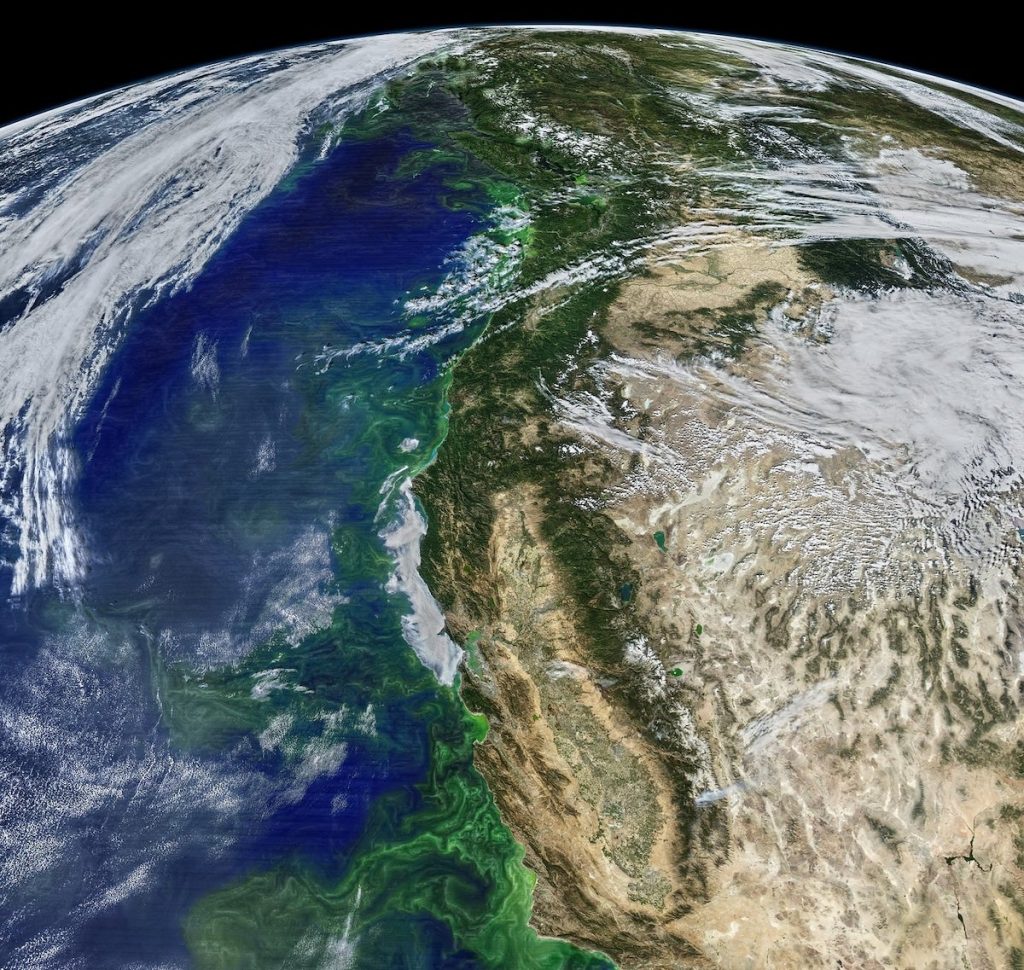Most Oceans Are Turning Greener, 20-Year Study Finds
3 min read
The Pacific Ocean teems with phytoplankton along the West Coast of the U.S., as captured by the MODIS instrument on NASA’s Aqua satellite in 2018. NASA
Founded in 2005 as an Ohio-based environmental newspaper, EcoWatch is a digital platform dedicated to publishing quality, science-based content on environmental issues, causes, and solutions.
After analyzing 20 years of ocean-color data from satellites, researchers in the UK and the U.S. have found that globally, 56% of oceans are becoming greener. The researchers believe this could be a climate change-driven shift.
Researchers used data collected by the Moderate Resolution Imaging Spectroradiometer (MODIS) from NASA’s Aqua satellite, and reviewed images from 2002 to 2022. They analyzed the images for colors across the light spectrum.
Over the past 20 years, they found a clear, significant trend of greening, with about 56% of the oceans, especially near and south of the equator, becoming greener.
While the researchers suspect this change in color is happening because of climate change, they noted in the study, which was published this summer in the journal Nature, that they did not attribute the greener color to high sea surface temperatures. Instead, they said it could be connected to other factors, including mixed-layer depth or upper-ocean stratification.
“This greening could result for instance from an increase in detrital particles, which would increase backscattering at all wavelengths and absorption at shorter wavelengths,” the study authors wrote. “However, it could also result from other possible ecosystem shifts, such as a simultaneous increase in zooplankton and coloured dissolved material.”
Similar research has focused primarily on chlorophyll and phytoplankton, which can vary from year to year, Stephanie Dutkiewicz, study co-author and a marine scientist at the Massachusetts Institute of Technology, told Eos. Climate models have typically found that climate change-driven shifts would need at least 30 years of data to prove. That has made it more difficult to track changes in ocean color and link any shifts to climate change.
Using the MODIS allowed the study authors to find that oceans are turning greener using data from a shorter timeframe, and they predicted climate change as a factor because the data followed climate models with high carbon emissions. They also used a control climate model without increasing greenhouse gas emissions to confirm their prediction.
The color change could be due to changing light environments that impact phytoplankton, the authors reported. Phytoplankton are an essential part of the food web in marine ecosystems, so shifts in their populations can also greatly impact other organisms. Phytoplankton also consume carbon dioxide and transfer it to different parts of the ocean as they die or are eaten, and even small changes in their populations could impact global surface temperatures, NASA reported.
The authors are encouraging other researchers to investigate changes in surface-ocean ecology and what could be causing these shifts. The science could help influence governments to create policies for ocean conservation.
“Our findings therefore might be of relevance for ocean conservation and governance. For instance, knowledge of where the surface-ocean microbial ecosystem is changing might be useful for identifying regions of the open ocean in which to establish marine protected areas under the United Nations high seas treaty on the biodiversity of areas beyond national jurisdiction,” the authors concluded.
Subscribe to get exclusive updates in our daily newsletter!
By signing up, you agree to the Terms of Use and Privacy Policy & to receive electronic communications from EcoWatch Media Group, which may include marketing promotions, advertisements and sponsored content.





